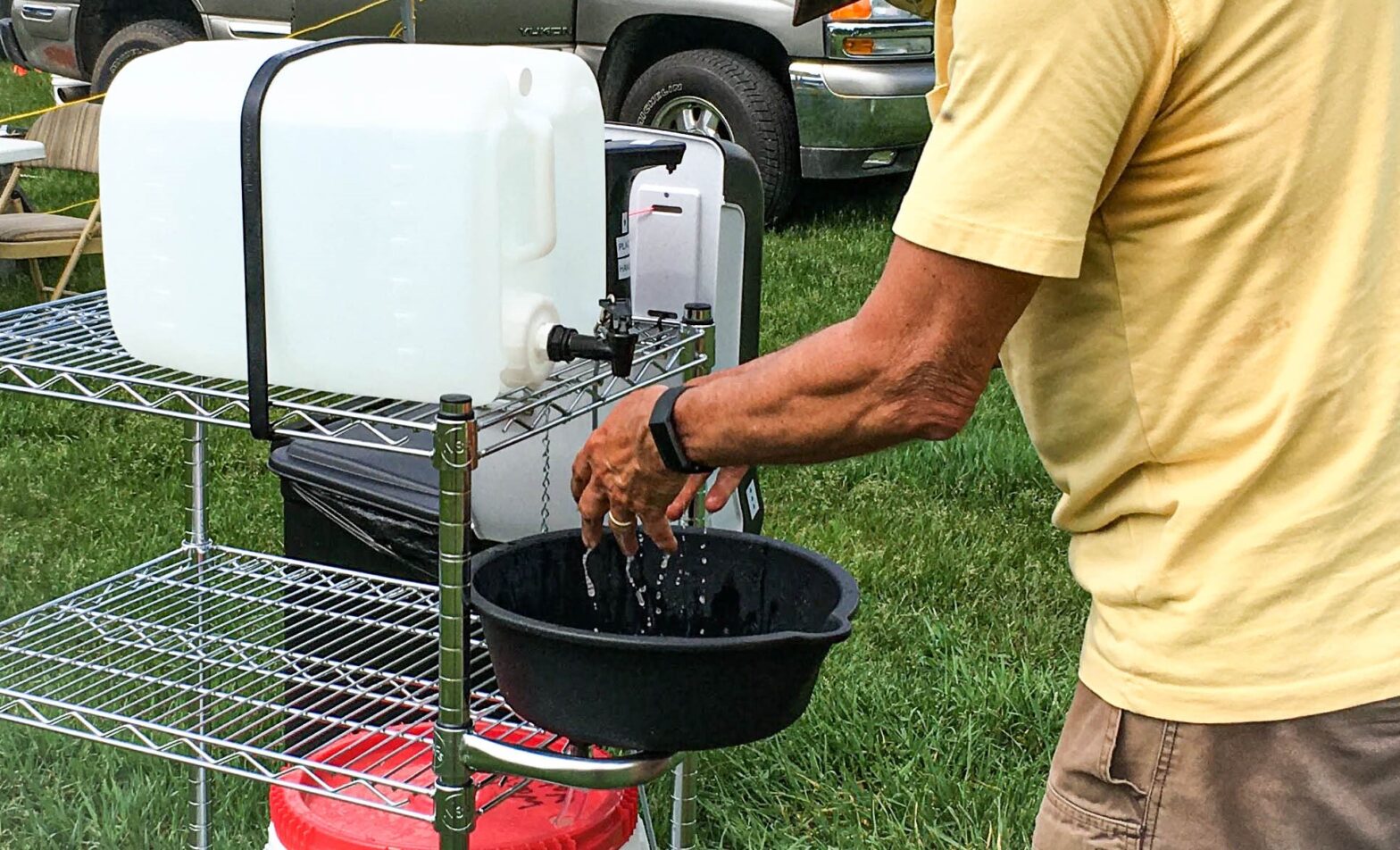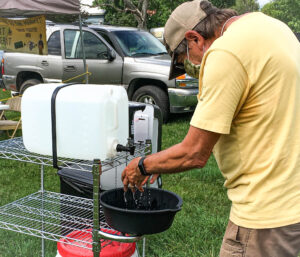

A downloadable PDF of this blog post and assembly guide is available here.
A video overview of a DIY Handwashing Station can be seen here.
Handwashing has been shown to be one of the most effective ways to reduce the risk of transmission of human pathogens between people. But, sometimes we are inconveniently far from the closest wash room and sink. Hand washing stations provide a portable means of washing hands on farms, at farmers’ markets, and at recreational sites. This guide was motivated by a desire to improve current handwashing station practice with a focus on minimizing or even removing all contact between the user’s hands and surfaces of the station.
The key design features of a handwashing station include
- Clean supply water that is safe and of adequate sanitary quality.
- Hands free operation of water which allows thorough washing of hands with full attention and also prevents cross contamination via faucet handle and other surfaces.
- Gray water collection for controlled disposal to prevent direct discharge of used water on the ground in order to minimize cross contamination and pollution.
- Hands free dispensing of soap to avoid cross contamination.
- Touchless or low contact paper towel dispenser to prevent cross contamination.
- Paper towel receptacle with a liner and a closing lid to ensure waste is contained.
- Sturdy construction leading to durable use over a long lifetime. Consider weather resistant materials or paint to prolong the life of the unit.
- Stable design that won’t tip over and which keeps parts intact.
- Portable so that it can be easily moved to where it is needed.
- Easy to maintain so that it remains useful and pleasant to use.
- Cleanable so that the handwashing station itself can be kept in hygienic condition. Surfaces should be smooth and cleanable and materials should be compatible with water and soap.
Stations destined for farmers market and PYO may also want to consider:
- Family friendly design (e.g. height or stool) that ensures a child could use the station with little or no assistance.
- ADA compliant and otherwise designed to allow improved access and use by those with physical disabilities.
The CDC’s “Five Steps to Wash Your Hands the Right Way”
Washing your hands is easy, and it’s one of the most effective ways to prevent the spread of germs. Clean hands can stop germs from spreading from one person to another and throughout an entire community—from your home and workplace to childcare facilities and hospitals. Follow these five steps every time.
- Wet your hands with clean, running water (warm or cold), turn off the tap, and apply soap.
- Lather your hands by rubbing them together with the soap. Lather the backs of your hands, between your fingers, and under your nails.
- Scrub your hands for at least 20 seconds. Need a timer? Hum the “Happy Birthday” song from beginning to end twice.
- Rinse your hands well under clean, running water.
- Dry your hands using a clean towel or air dry them.
Putting it into Practice
The following images provide a general approach to a touchless handwashing station and two specific build plans. The build plans include (1) a DIY framed stand and (2) a purchased stand.
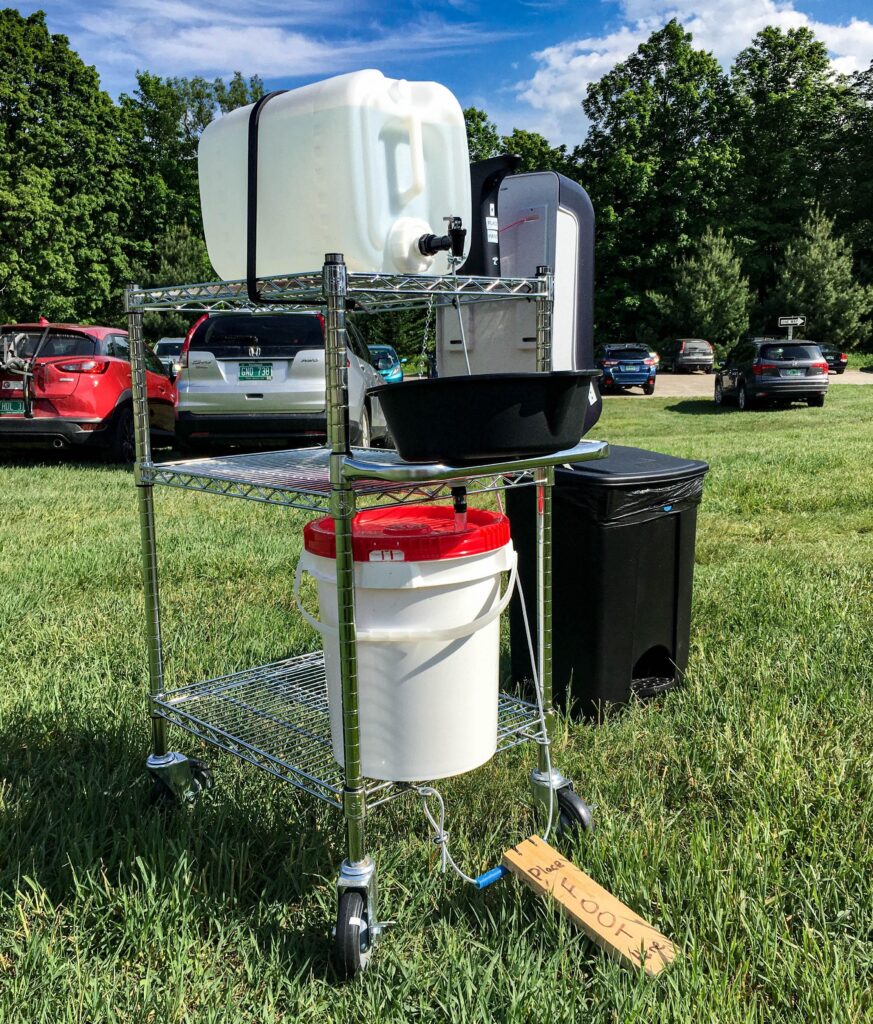
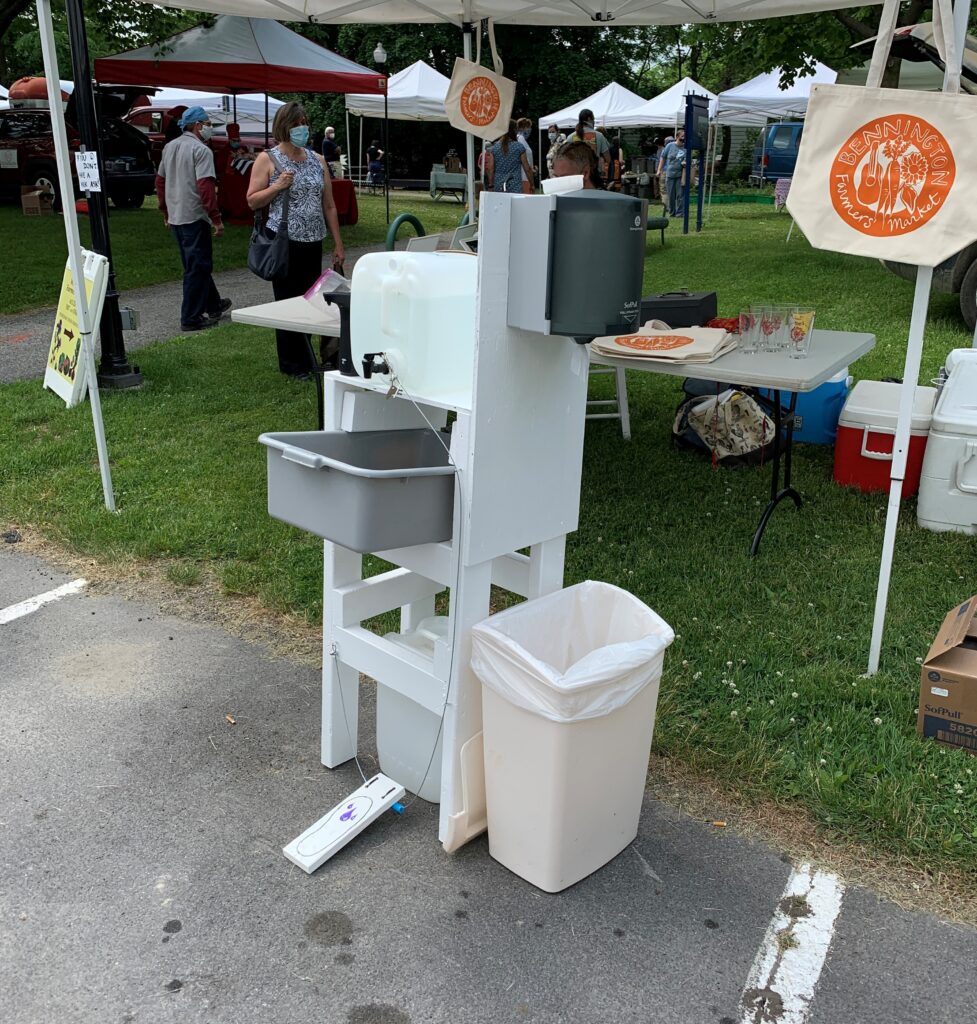
The Basic Parts and Pieces
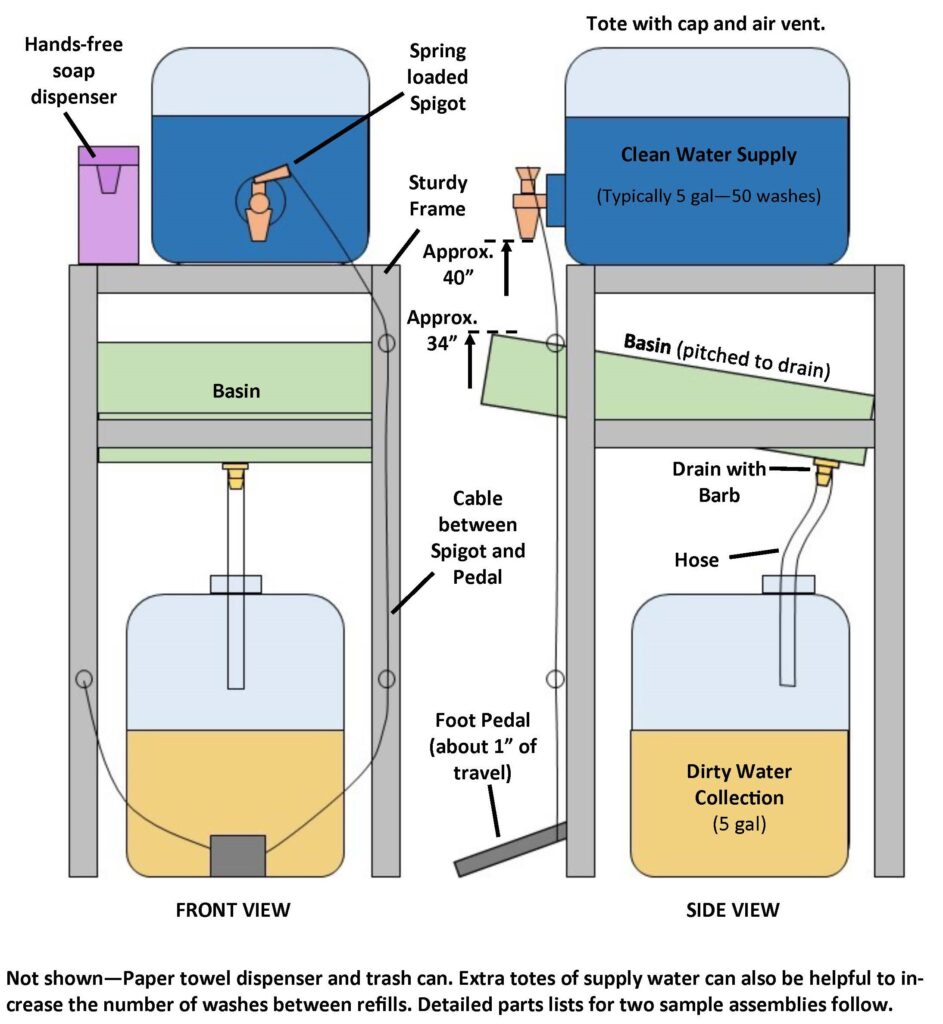
DIY Framed Stand
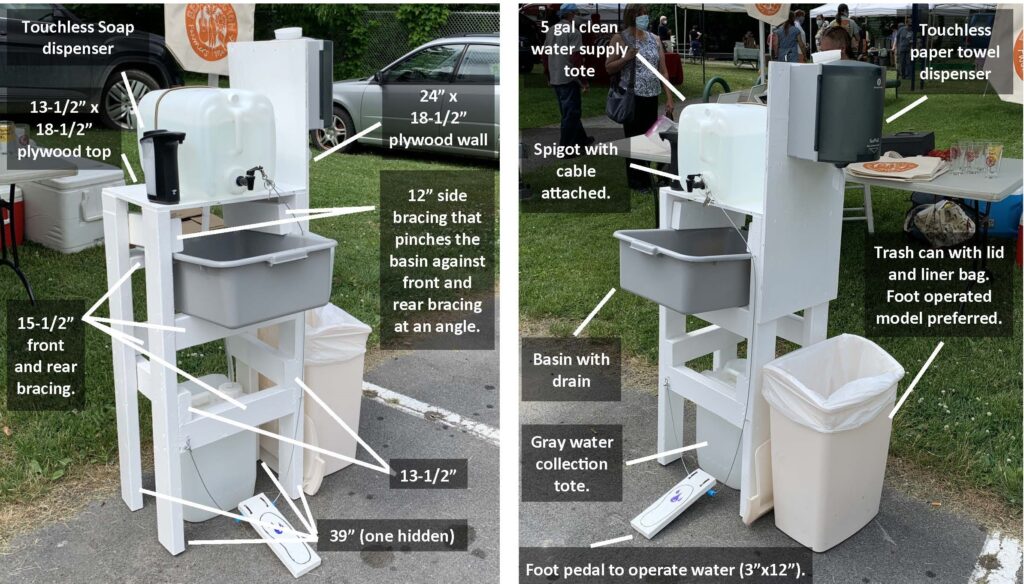
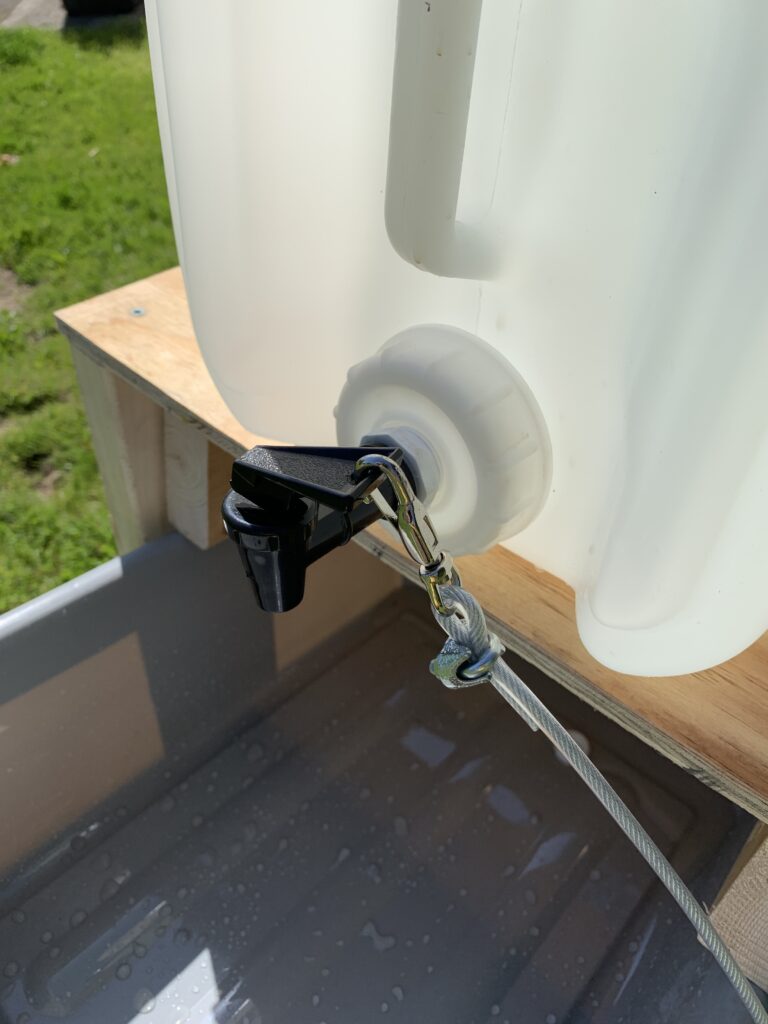
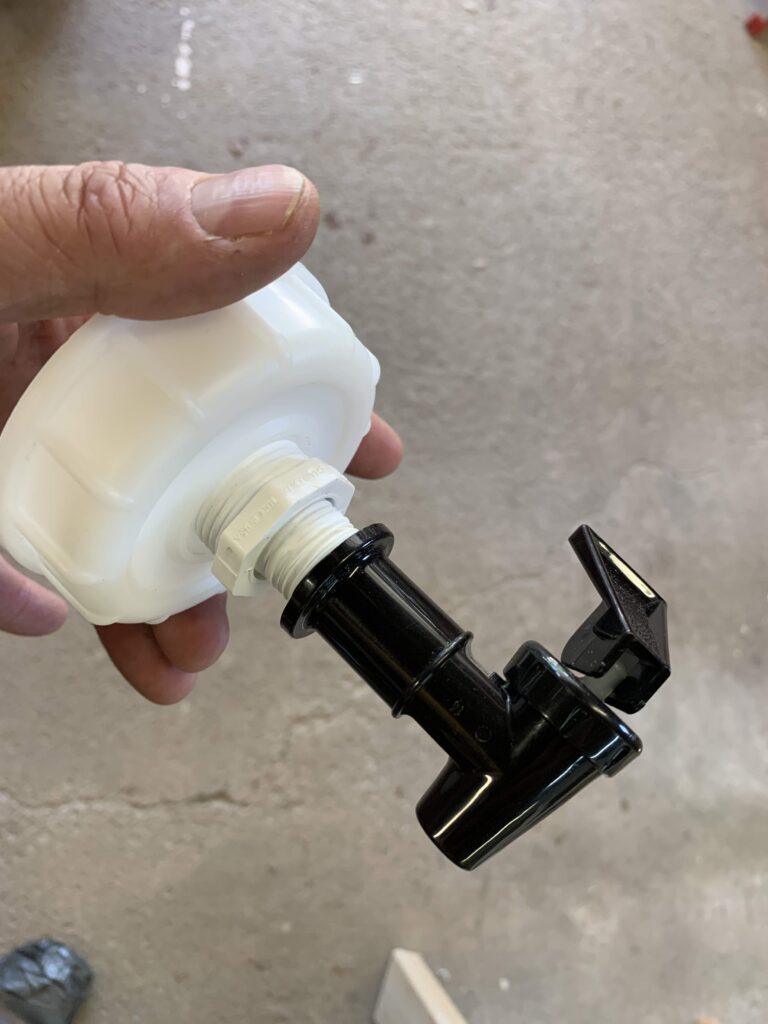
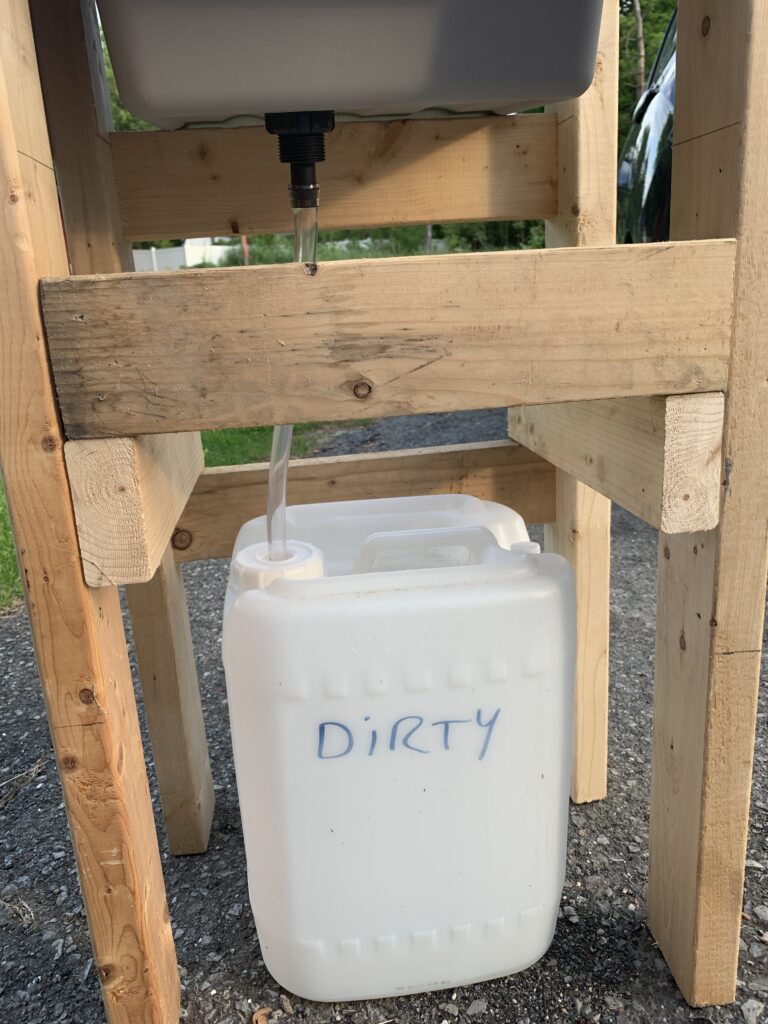
Bill of Materials (For Wooden Stand)
| Qty | Item | Est Cost |
| 3 | 2”x4”x 8 ft dimensional lumber – Cut List: [39”] [15-1/2] [15-1/2] [13-1/2] [12] [39”] [15-1/2] [15-1/2] [13-1/2] [12] [39”] [39] [12] [5] | $20.00 |
| 1 | 13-1/2” x 18-1/2” 3/8” or 1/2” Plywood | $5.00 |
| 1 | 24” x 18-1/2” 3/8” or 1/2” Plywood | $5.00 |
| 2 | 5 gallon carboy tote (supply & grey water) with 70 mm cap (3/4” NPT thread, knockout) | $22.00 |
| 1 | 6 quart Oil drain pan (basin) | $3.00 |
| 1 | Bus tray (basin) | $4.00 |
| 1 | Basin drain fitting (flush mount) | $2.00 |
| 1 | 3/4” UNF HFSLT Valve (Spigot) | $1.00 |
| 1 | 3/4” MPT to 1/2” FPT adapter | $1.00 |
| 1 | 5 ft 3/16” vinyl coated steel cable | $4.00 |
| 2 | 1/8” Galvanized Wire rope clip | $2.00 |
| 1 | 6” length of 1/2” PEX or PVC (pedal) | $1.00 |
| 1 | Spigot cable latch—2” CRD snap spring | $2.00 |
| 1 | Trash can (foot operated with lid) | $20.00 |
| 1 | Paper towel dispenser | $16.00 |
| 1 | Hands free soap dispenser | $35.00 |
| Misc | Fasteners (deck screws) | $2.00 |
| Misc | Teflon tape | $1.00 |
| Total | $146.00 |
Purchased Cart
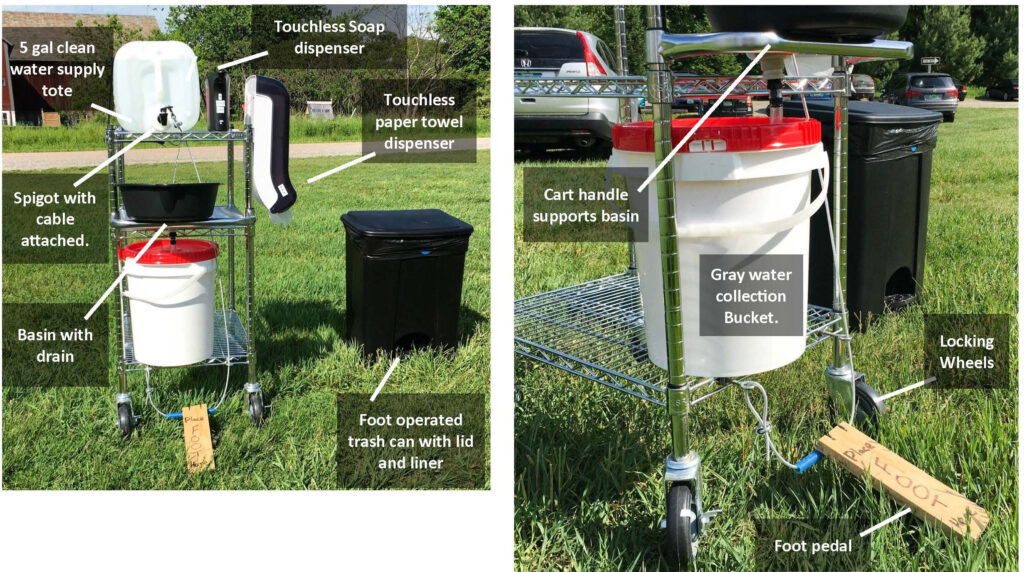
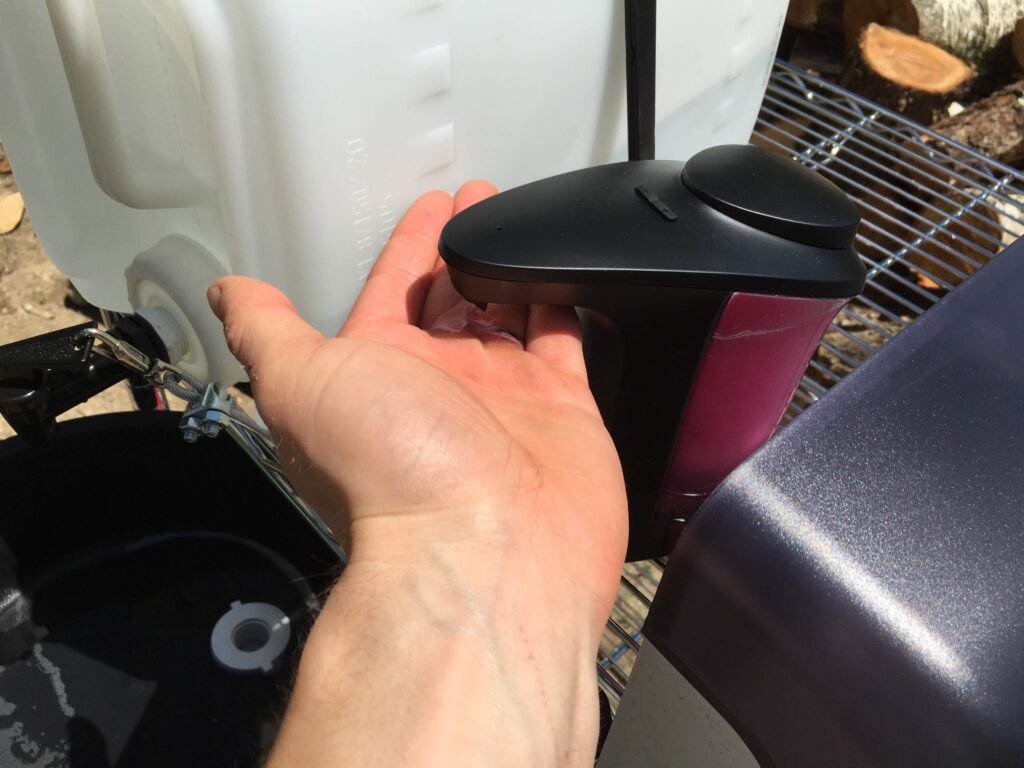
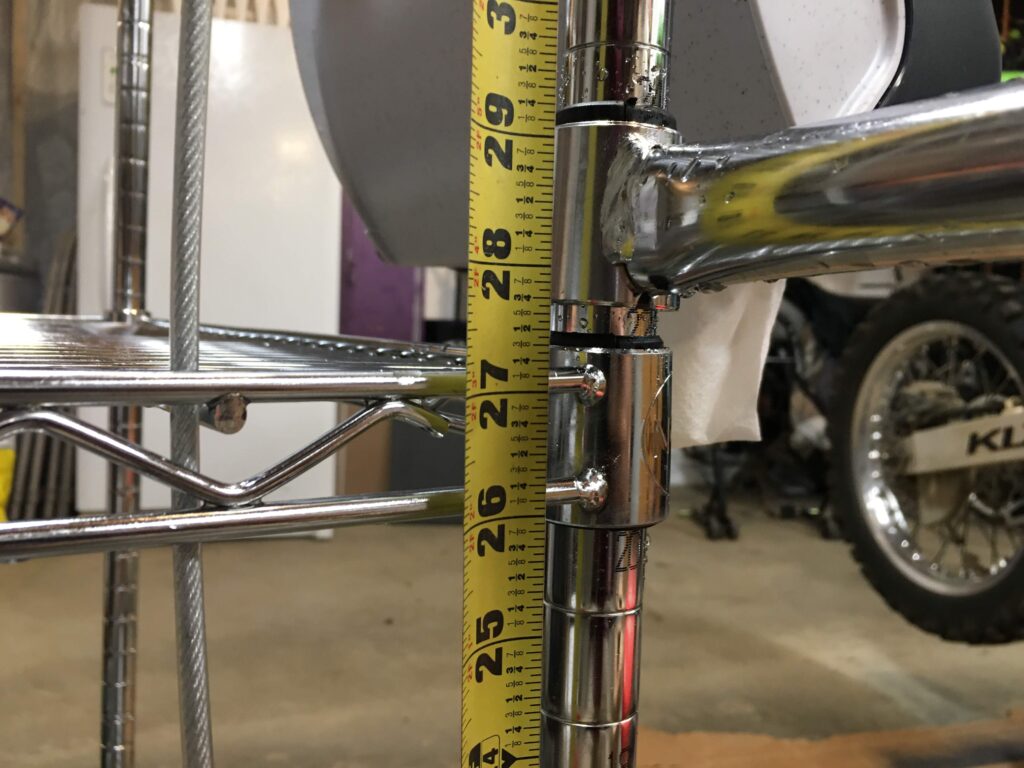
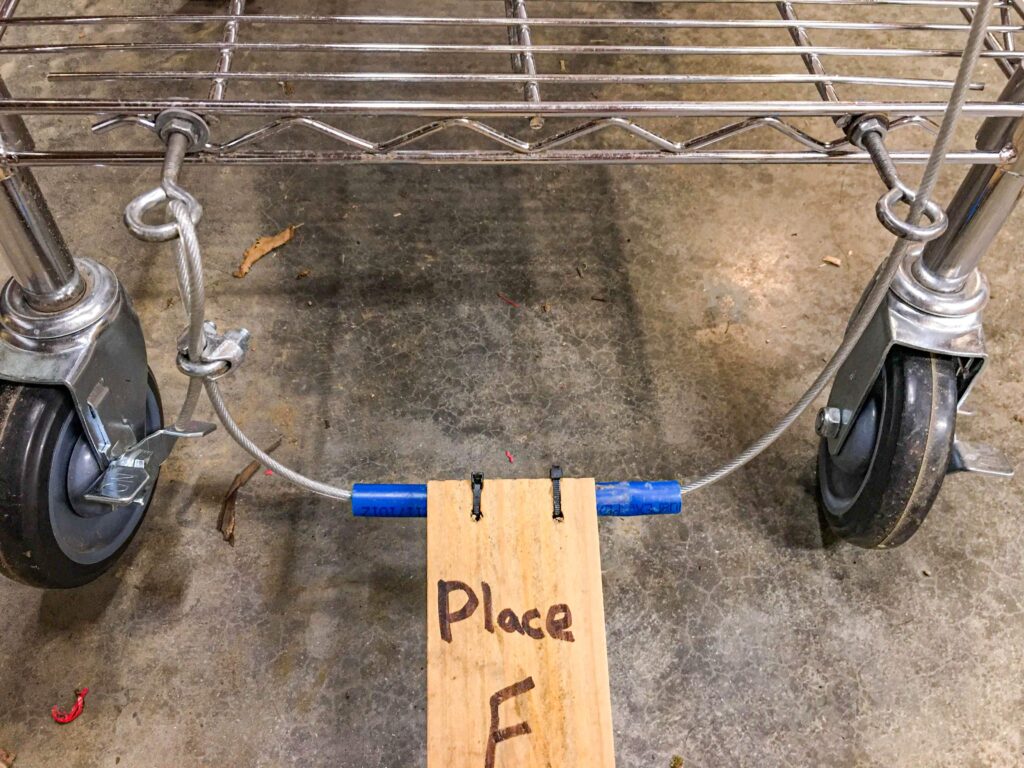
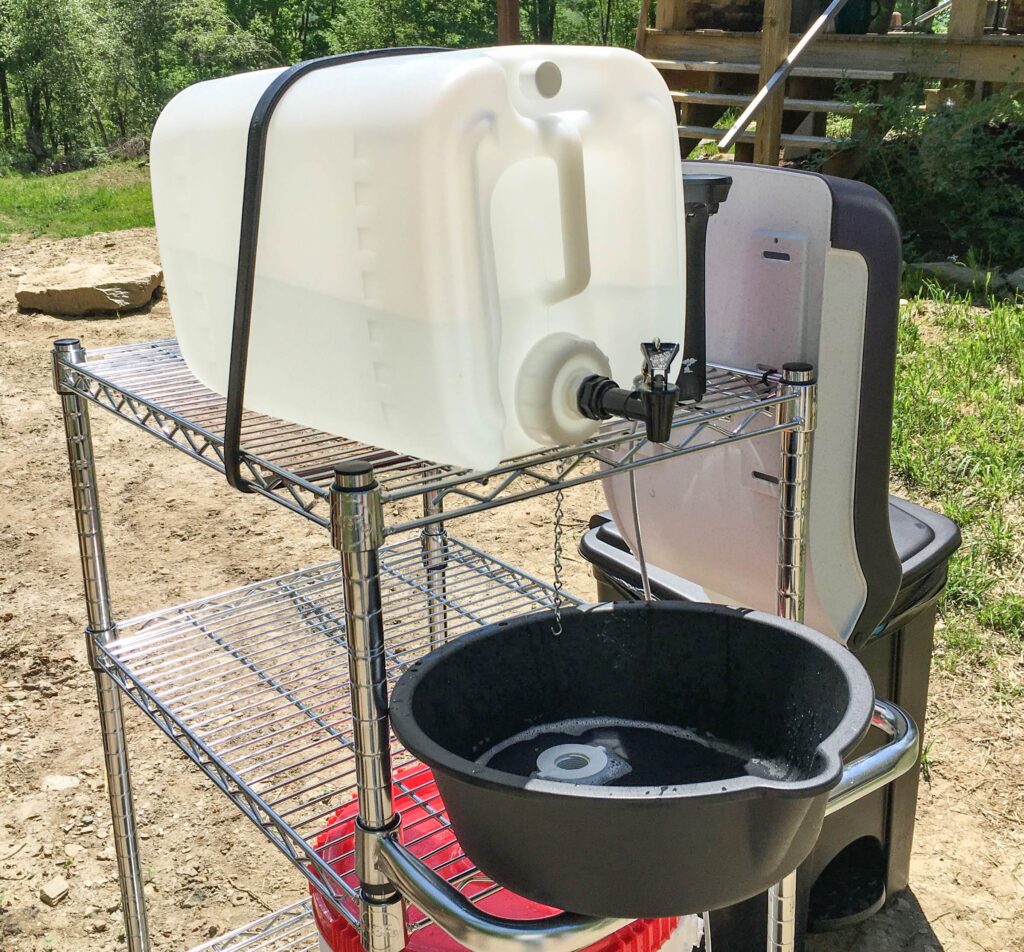
Bill of Materials (For Purchased Wire Rack Cart)
| Qty | Item | Est Cost |
| 1 | Wire Rack Cart | $51.00 |
| 1 | 5 gallon carboy tote (supply water) | $12.00 |
| 1 | Bucket “Lite latch” Lid | $4.00 |
| 1 | 5 gallon “Lite Latch” Bucket for Drain | $9.00 |
| 1 | 6 quart Oil drain pan (basin) | $4.00 |
| 1 | Basin drain fitting (flush mount) | $4.00 |
| 1 | 1 ft 1/2”ID, 3/4” OD Vinyl Hose/Tubing | $1.00 |
| 1 | 3/4” UNF HFSLT Valve (Spigot) | $5.00 |
| 1 | 3/4” MPT to 1/2” FPT adapter | $1.00 |
| 1 | 5 ft 3/16” vinyl coated steel cable | $4.00 |
| 2 | 1/8” Galvanized Wire rope clip | $2.00 |
| 1 | 6” length of 1/2” PEX or PVC (pedal) | $1.00 |
| 1 | Spigot cable latch—2” CRD snap spring | $2.00 |
| 1 | Trash can (foot operated with lid) | $20.00 |
| 1 | Paper towel dispenser | $16.00 |
| 1 | Hands free soap dispenser | $35.00 |
| 2 | ¼”x3” Eyebolts and nuts | $2.00 |
| 2 | 1/4” Nuts & Washers | $2.00 |
| 1 | 12” Jack chain | $1.00 |
| 1 | Teflon tape | $1.00 |
| 1 | Rubber Strap | $4.00 |
| Misc | 3″x3/4″x11″ Board for foot pedal, zip ties | $5.00 |
| Total | $186.00 |
Video Overview of The Wire Rack Build
Useful Tips and Updates
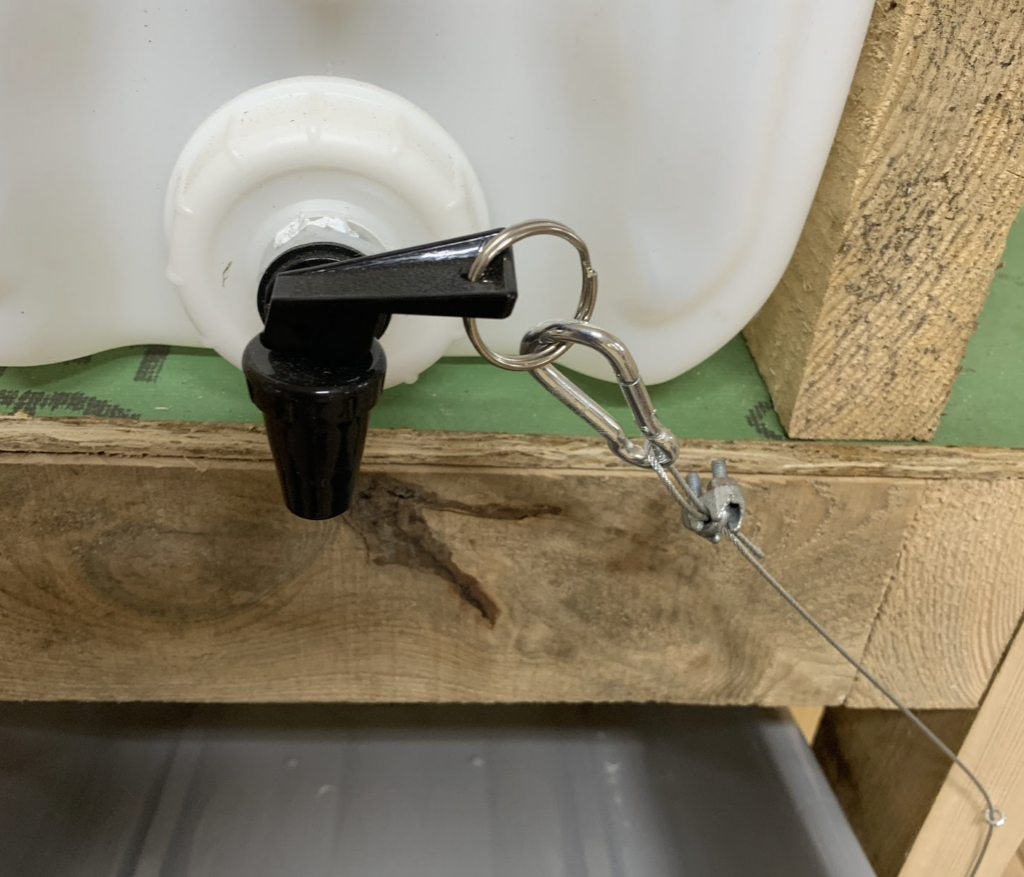
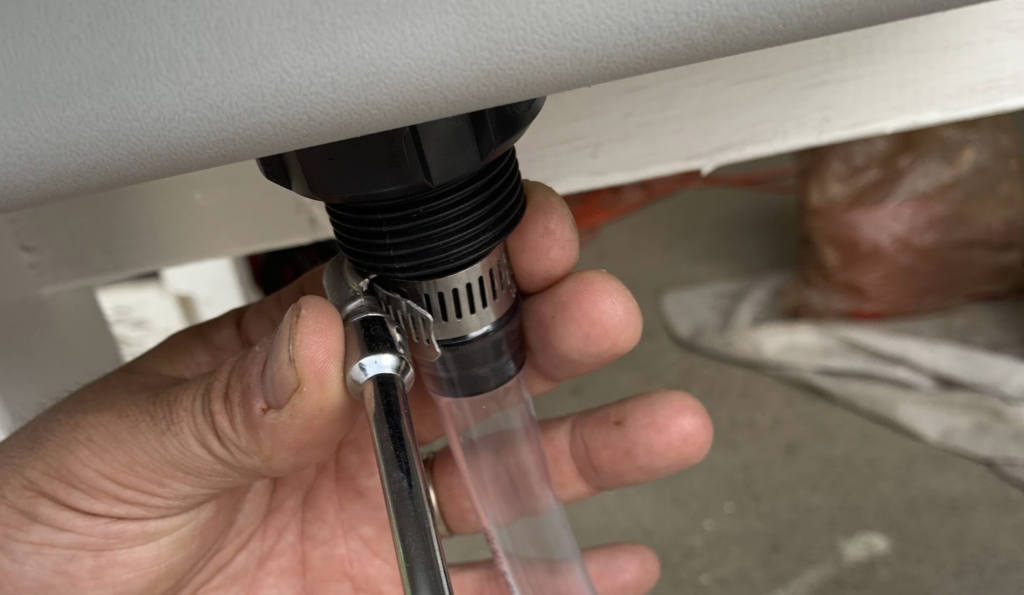
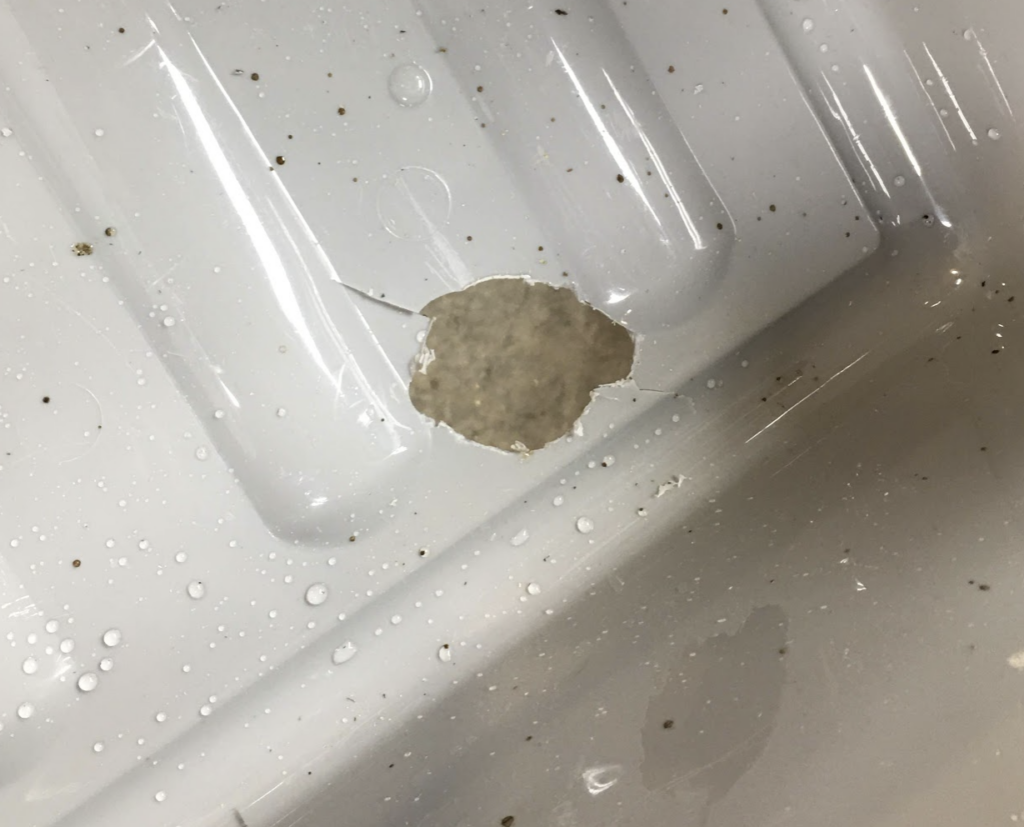
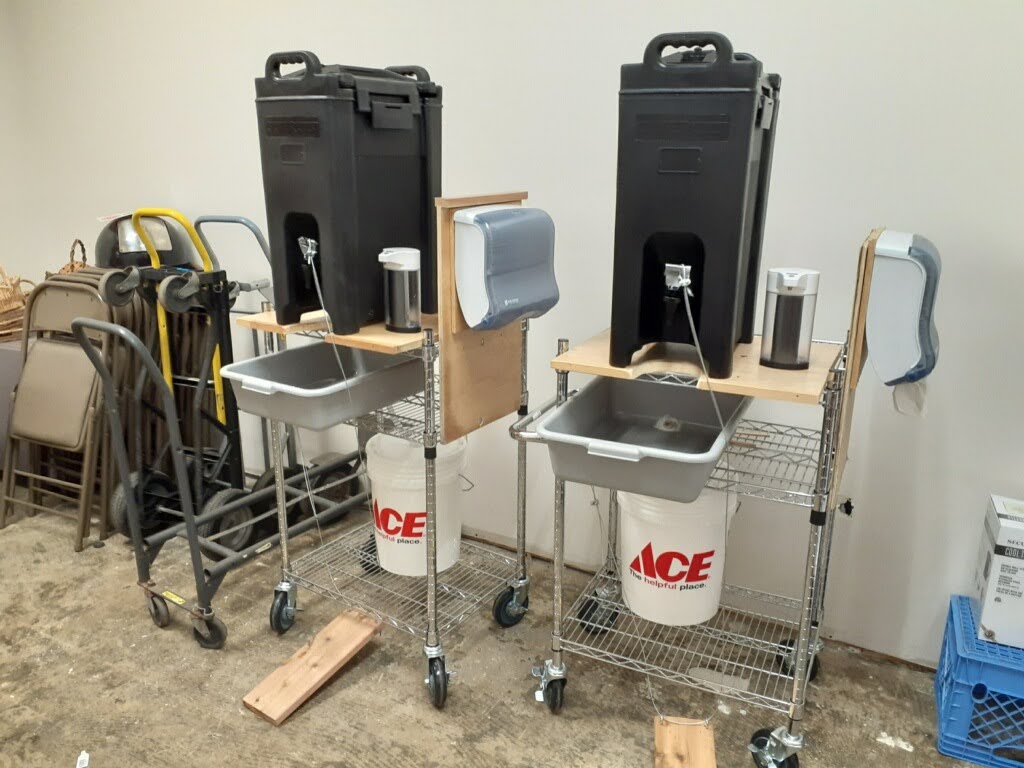
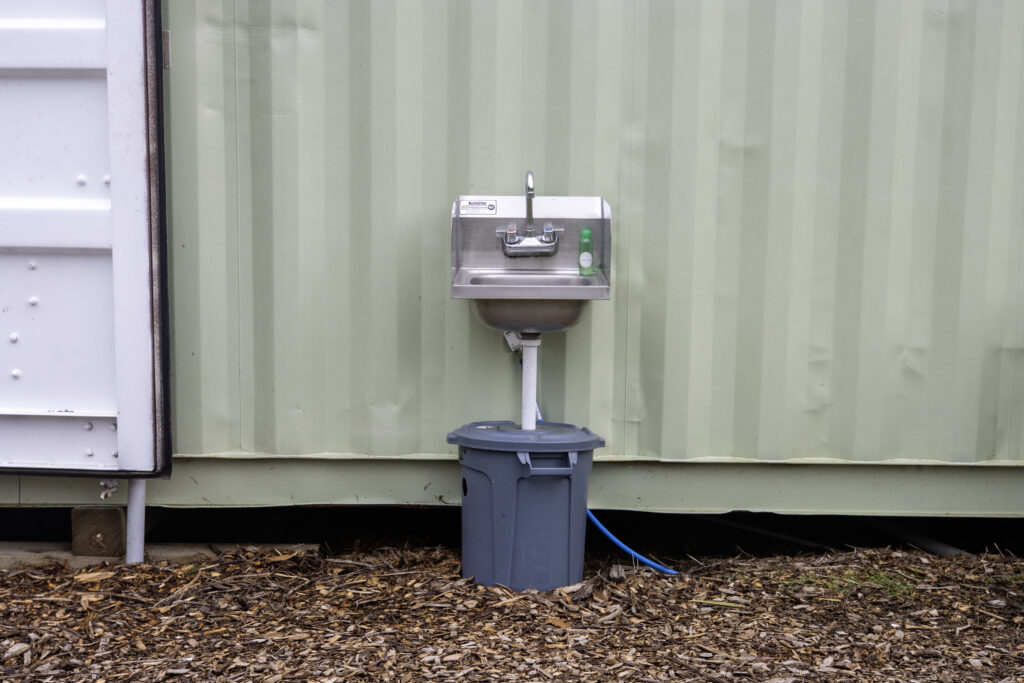
Share this post!
Acknowledgments
Funding for this publication was made possible, in part, by the USDA Northeast Sustainable Agriculture Research and Education program through award LNE19-375, by the Food and Drug Administration through The Vermont Agency of Agriculture Food and Markets via the Integrated Extension Educational Programming in Support of the VAAFM Produce Program Grant 02200-FSMA-2018-01. The views expressed in the publication do not necessarily reflect the official policies of the U.S. Department of Agriculture, the U.S. Department of Health and Human Services or the Vermont Agency of Agriculture; nor does any mention of trade names, commercial practices, or organization imply endorsement by the United States Government or the State of Vermont.
